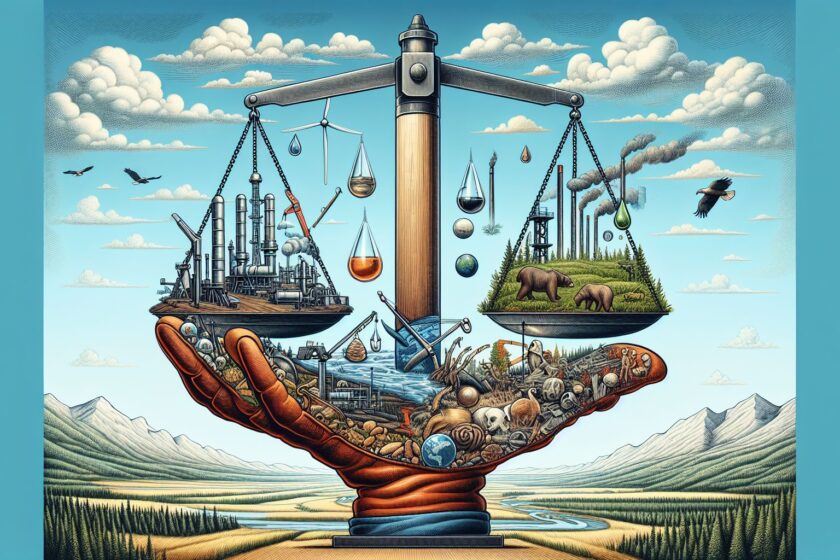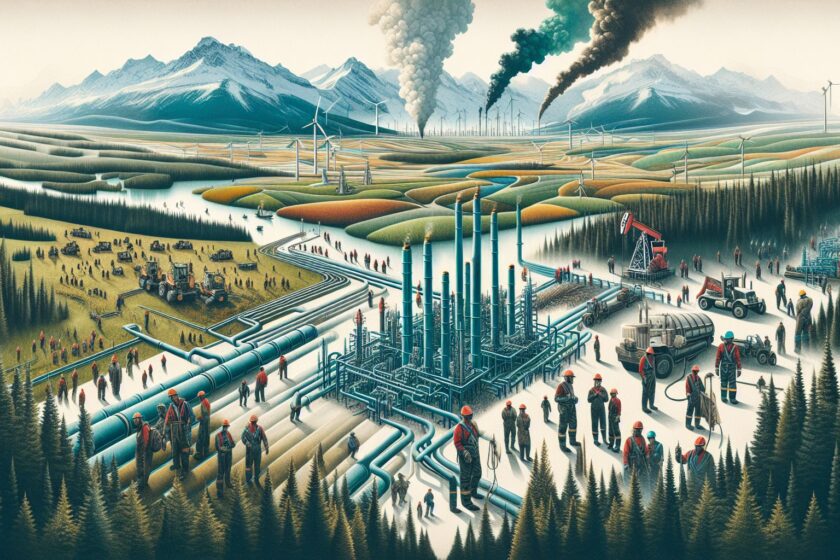Canada’s Oil & Gas Industry: A Constant Balancing Act between Resources and Environmental Concerns
Even though the oil and gas industry in Canada has long played a significant role in the country’s economy, it finds itself in an eternal tug-of-war between resource exploitation and environmental sustainability. With vast reserves and a booming global demand for energy, Canada stands as a major player in the international oil and gas market. However, this lucrative industry faces critical challenges concerning environmental impact and the need for clean energy transition.
A Resource-Rich Nation
Canada is famously known for its abundant natural resources, and its oil and gas reserves are no exception. The country possesses one of the largest reserves of crude oil on the planet, mainly concentrated in the oil sands of Alberta. These oil sands alone contain approximately 165 billion barrels of oil, making them a valuable asset and propelling Canada into the ranks of the world’s top oil producers.
The oil and gas industry in Canada provides thousands of jobs, fuels economic growth, and contributes significantly to the country’s GDP. It attracts investments, both domestically and internationally, and ensures energy security for Canada and its trading partners. Undoubtedly, it plays a crucial role in supporting the nation’s prosperity.
Environmental Concerns and Controversies
However, the extraction and production of oil and gas resources pose significant environmental challenges and controversies. The primary concern revolves around the extraction of oil from the oil sands. This method involves removing the top layer of soil and clay, which disrupts the fragile ecosystem and adversely affects water bodies and wildlife habitats. Additionally, the process requires an enormous amount of water, contributing to water scarcity in the region.
Moreover, the burning of fossil fuels derived from oil and gas emits greenhouse gases, exacerbating climate change. Canada’s commitment to reducing its carbon footprint and transitioning towards cleaner, renewable energy sources clashes with the reality of its oil and gas industry. Achieving a delicate balance between resource exploitation and environmental protection becomes imperative.
Striving for Sustainability
Recognizing the importance of environmental stewardship, the Canadian government has implemented various regulations to mitigate the industry’s impact. Companies operating in the oil and gas sector are required to adhere to strict environmental standards, such as reducing greenhouse gas emissions and implementing measures to minimize water usage.
In recent years, innovative technologies have emerged to address the environmental challenges associated with oil sands extraction. Methods like steam-assisted gravity drainage (SAGD) and carbon capture and storage (CCS) aim to reduce the carbon footprint of oil production and increase energy efficiency. These advancements demonstrate Canada’s commitment to sustainable practices within the industry.
The Path to Clean Energy Transition
As the world shifts towards a low-carbon future, the oil and gas industry in Canada must adapt and find ways to transition to cleaner energy sources. With renewable energy technologies gaining prominence, there is a growing need for the industry to invest in research and development of sustainable alternatives. This transition presents an opportunity for Canada to diversify its energy sector and lead in areas like solar, wind, and geothermal energy.
Investment in clean technologies and fostering collaboration between the government, industry, and environmental organizations will be key to achieving a greener future. By promoting innovation and renewable energy adoption, Canada can balance its economic interests with its environmental responsibilities.
Conclusion
Canada’s oil and gas industry undoubtedly holds significant economic importance and contributes to the nation’s prosperity. However, the industry faces substantial challenges when it comes to ensuring environmental sustainability. Finding a middle ground, where resource exploitation aligns with responsible environmental practices, will be crucial for the industry’s success in the long run.
Through proactive measures, stringent regulations, and a commitment to innovation, Canada can navigate the complex terrain of balancing oil and gas demands with environmental concerns. It is through such a balanced approach that the country can thrive economically while also becoming a global leader in the transition towards an environmentally sustainable future.










